If you’re looking for a web-based community or team chat system, you’ll find it hard to choose between Slack or Discord. Both platforms are built with teams in mind, offering community chat rooms, private messaging, screen sharing, video calling, third-party integrations, and more.
If the choice between Slack vs. Discord is proving difficult for your next community project, it might be worth thinking about the pros and cons. Each platform has its own strengths and weaknesses, so if you’re looking to set up a new Slack or Discord server, you’ll need to consider which is best for you by considering these points.
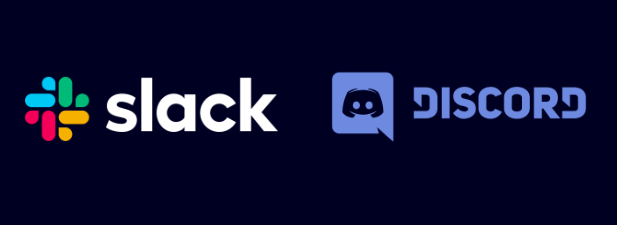
Communication
The most important feature of chat-based services like Slack and Discord is communication. As you might expect, both platforms offer two ways to communicate with other server members.
Both Slack and Discord offer users the ability to chat privately or publicly in shared rooms, with administrators able to limit access to individual users through invites or server roles. There is a near-unlimited limit on server members on either platform, so you should be able to fit your entire team or group in a single server to chat.
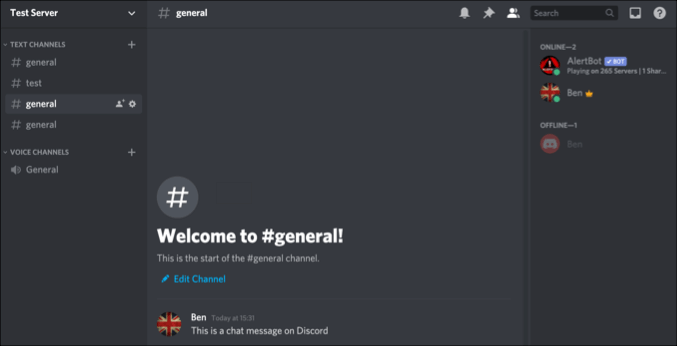
The only real difference between the two platforms for text-based communication is in threaded messages. In public or private channels on Slack, you can reply to a message and create a new “thread” to group replies together. This, unfortunately, isn’t possible in Discord, although you can “reply” to specific messages.
On Slack, you’ll also find that chat history is limited unless you upgrade to a paid plan. On Discord, all messages are saved indefinitely, allowing you to scroll back or search through and review old messages.
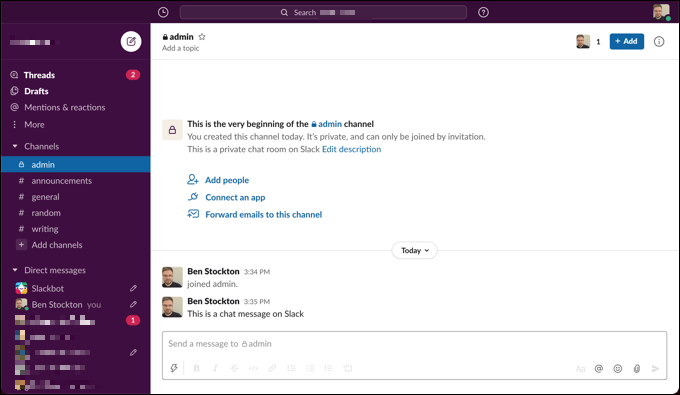
Both platforms allow you to use voice messaging to communicate, too. With its gaming background, Discord does this with a push-to-speak approach, with separate voice-capable rooms that up to 99 other members can join. In contrast, Slack users need to start a call, with support for between 2 and 15 users (based on the cost).
You can also show off your camera feed or share your screen in Discord or Slack, but Slack offers more features in line with its work-based approach, with the ability to remote control another user’s screen among others.
Security
It’s not surprising that both Discord and Slack are focused on security, helping you to maintain your online privacy without risking your personal data. Both platforms encrypt data to help protect against data breaches, but some of this will depend on your own account security.
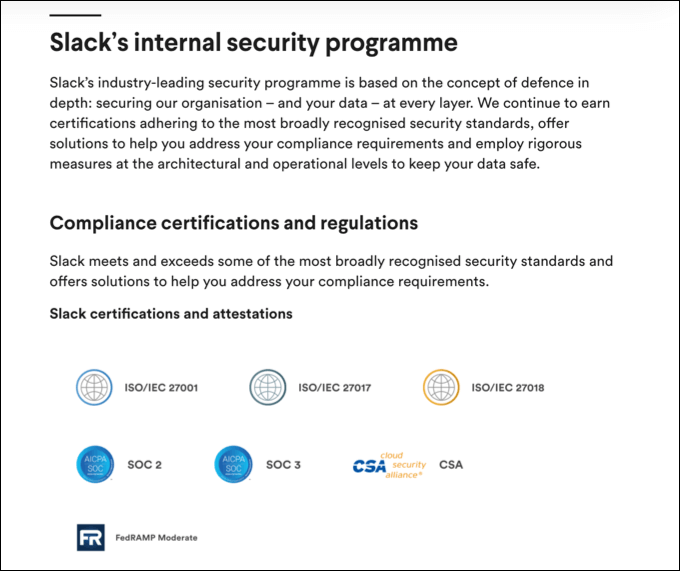
With a focus on business communication, Slack has built a platform that takes industry compliance regulations seriously. It meets or exceeds a number of industry standards for data security, including ISO/IEC 27001 and 27017. To help, it offers two-factor authentication, single sign-on for company user accounts, and more.
While Discord isn’t focused as much on work-based environments, it still has a number of extra security features for individual user accounts. These include enforcing a secure password, two-factor authentication for user accounts, blocking unknown messages, and more.
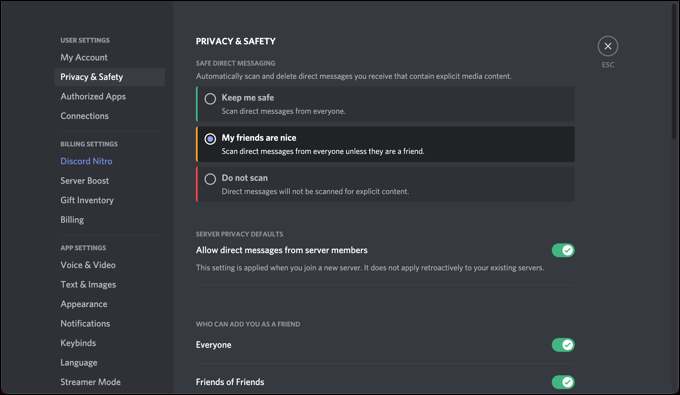
Both platforms allow you to limit who has access to your shared server, requiring an invitation to join. This is done by email for Slack, while Discord users can receive emailed or URL invitations that can be disabled remotely or time-limited for single or limited use.
If you’re worried about your data security using platforms like these, you should check to see if data has been compromised online.
Third-Party Integrations
If you’re developing a product with a set purpose like communication in mind, it makes sense to avoid reinventing the wheel. Both Slack and Discord understand this with the approach that both platforms use for third-party integrations.
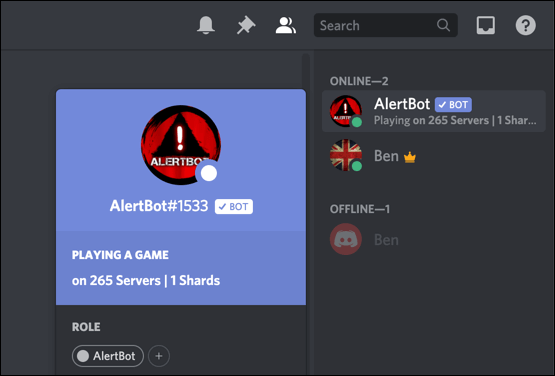
On Discord, this usually means adding a bot to your Discord server. Bots are created by third-party developers to add new features to Discord, from music bots to moderation bots. You either can host it yourself on a web server or invite the bot to your Discord server, with the bot hosted by the developer themselves.
Along with bots, you can also integrate Discord with a limited number of music and gaming services, including Spotify and Xbox. Entertainment features like these are why Discord is the perfect platform for gamers and hobbyists, in particular.
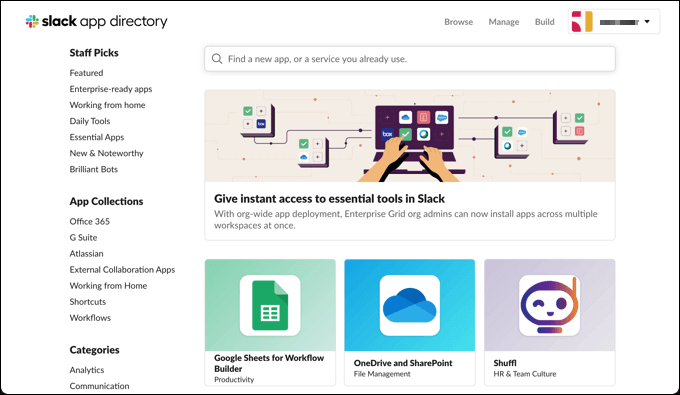
Slack, on the other hand, is all about productivity with the integrations that it supports and offers. Slack has thousands of supported integrations (named apps) that you can insert into your server directly, with most designed to help teams collaborate and work better remotely, from Google Drive to Trello.
Unlike Discord, however, you can’t host your own apps. Any third-party services you wish to integrate must be added as an app to Slack’s database, receiving pre-approval. In contrast, if you can code, you can create your own Discord bot to insert new features pretty quickly.
Cost
Both Slack and Discord have a free-to-use product that you can try straight away–no trial periods, no upfront costs. There are, however, some limitations that you’ll need to consider.
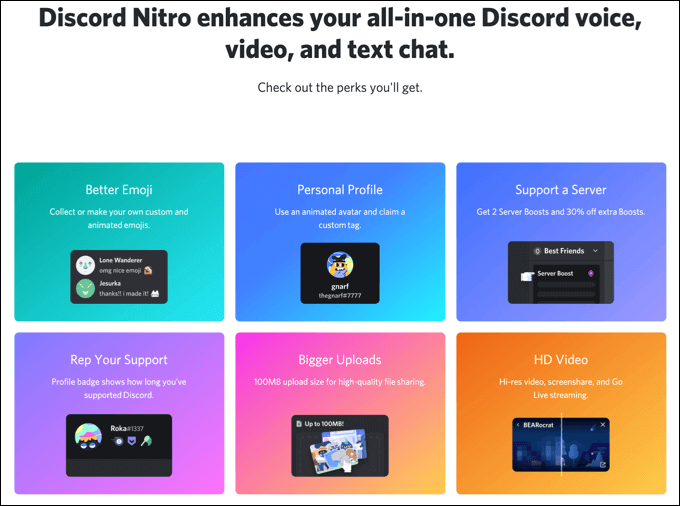
For Discord, most features are free to use without obvious limitations. Chat history isn’t limited, and you can have thousands of users active and online (using voice and text chat facilities) at once.
Your users may need to upgrade to a paid plan if you’re seeing voice quality issues on Discord, however, as audio quality is capped without Discord Nitro boosts on your server. This is where paid Discord users donate their paid sub perks to a server to unlock additional benefits for that server as a whole.
Discord Nitro subscriptions offer other benefits, however, with users gaining additional personalization perks, such as additional emoji slots, GIF avatars and tags. Discord Nitro costs $4.99 a month ($49.99 a year) without server boosts or $9.99 a month ($99.99 a year) for two boosts a month.
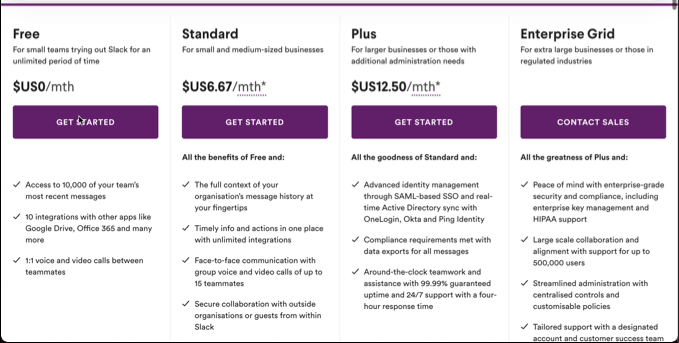
In contrast, most Slack features are offered with obvious limitations. Server chat history is limited to up to 10 thousand messages, while video and voice chat is limited to two users only, with server integrations limited to 10 apps. This makes team collaboration pretty difficult for larger organizations, forcing owners to upgrade.
Slack, however, is not a cheap service to pay for. Various Slack plans are available, paid by the server owner on a per-user basis, costing between $6.67 and $12.50 per user, per month, or more for extremely large businesses.
The more expensive the Slack plan, the more storage, customization, better security, and other features are available for users. If you’re a hobbyist or small business owner, however, Slack’s additional features may prove too costly.
Choosing Between Slack vs. Discord
In the battle between Slack vs. Discord, it all comes down to your requirements and preferences. Both platforms offer an easy way to communicate in different ways. While Slack is definitely a platform built for team working, Discord is geared towards hobbies like gaming.
Of course, there are alternatives like Microsoft Teams to consider if you’re interested in work-based collaboration. If Slack is your preferred option, there are plenty of Slack tips that can help you create the best server for your team, but if you prefer Discord, it’s pretty easy to make a new Discord server to try things out.
source https://www.online-tech-tips.com/software-reviews/slack-vs-discord-which-is-better/
